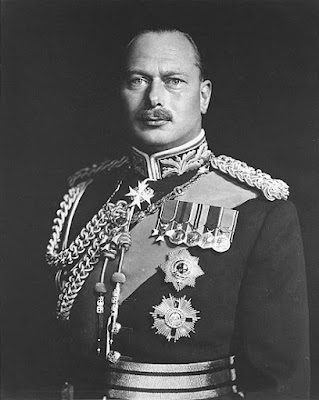THE CRUCIAL YEARS 1947-1949
In the last post, we saw how the future of the School was very uncertain in 1946. With the Independence of India around the corner many students of both British and Eurasian ( as was the term commonly used for Anglo-Indians those days) lineage left to go to the UK, Australia, and even the United States.
It must be remembered that till 1947 there were no Indian students in the School at all. The first student who was not British or Eurasian, to be admitted to the School was Humayun Dhanrajgir. He is listed in the School Admission Register as being admitted on June 10, 1947. The first Indian girl to join the School was Komala/Kamala Reddy who joined on March 2, 1948 along with Malathi Reddy.
Three days later, one of our key contributors for Glimpses- Kevin Joseph Phillips, ARA 1956, joined on March 5, 1948.
At that time there was considerable opposition in political circles to the continuing of institutions perceived to be elitist English schools. It was widely feared that schools such as Sanawar and Lovedale would be closed down in the new milieu of an independent India. One of the School's distinguished Headmasters, Mr L A Vyas has publicly acknowledged the role of Independent India's first Minister of Education, Maulana Abul Kalam Azad (1888-1958) in the decision to keep the schools going.
In 1948, at a crucial juncture, the fortunes of the School were saved by the recommendations of the Rao Committee -comprising Mr P V R Rao, ICS, Mr J Dayal, Mr M S Sundaram, and Brigadier J H Wilkinson -appointed by the Government of India to "examine the Future Organisation of The Lawrence Military Schools."
They recommended vide their report dated May 31, 1948: "....we are satisfied that there are facilities to run a first class public school in Lovedale...... for any public school to run efficiently and economically it must have at least 300 pupils on its rolls.....many of the current 300 may be expected to be removed from the school shortly.......we feel if a public school open to all without restriction of nationality or creed is available in the Nilgiris it will meet a long felt need.........it is essential that admission to a public school run by the Government should not be confined only to those rich persons who can afford to pay the high fees to the extent of Rs 1200 per annum ..........we recommend therefore that the Government must accept liability to educate free of cost or at concessional rates at this school, a limited number of children who on merits are capable of benefitting by a public school education but whose parents are unable to afford the necessary expenditure. "
The Lawrence Schools at Sanawar, Mt Abu, and Lovedale, had different histories and issues at this point in time. The one at Sanawar had always been directly administered by the Crown while Mt Abu and Lovedale were administered by Trustees who owned considerable assets. The Trustees governed the Schools through the Boards of Governors which had representatives of the Government of India. Funds for the schools by way of grants in aid came from the Ministry of Defence, through Army HQ.In the case of Sanawar, things were much easier. The Ministry of Defence passed on control to the Ministry of Education as the Government owned all the assets including the land.
Lovedale was a different case as the Trustees owned the buildings and other assets but not the land which always was owned by the Government of India. Consequently, the Government of India held negotiations with the Trustees and took complete charge of the School after agreeing that they would bear the expenses of the entitled children as long as such entitled children remained on the rolls of the school. The expression " entitled" children was used for the orphans of British military personnel, and children of British military personnel who died during service in India.
An article in "The Lawrencian" in 1950 reported: " The Board of Trustees and the Board of Governors therefore wisely decided to hand over the institution to the Government of India with its assets and liabilities on the condition that the "entitled" children will continue to get the facilities which they were enjoying heretofore. The actual hand over took place on May 14, 1949. The Government of India decided to run the institution as a public school for boys and girls and have also changed the name of the School to "The Lawrence School, Lovedale, (Nilgiris)"
It was decided that children of military personnel would make up 40 % of the student body.
Dr Suraj Bhan, MA (Lond), Dip in Edn, Ph.D (Edin) was appointed the first Indian Principal of the School. In 1949 he succeeded Major A V Richardson - the last British Principal - who resigned.
As 1949 came to a close, it was clear that the worst was over. The Lawrence School, Lovedale - like the old buildings on its grounds- had successfully weathered the storm.








